#electromagnetic field
Text

Kirlian photograph of a butterfly showing the electromagnetic discharge around its edges
89 notes
·
View notes
Text

Physics can help us understand how the ancient Egyptians built the great pyramids of Giza, as well as how they interact with electromagnetic waves.
One of them is the wet sand technique.
This technique involves wetting the sand to reduce the friction and the effort required to drag heavy blocks of stone on sleds.
A team of physicists from the University of Amsterdam demonstrated this technique in 2014, using a simple experiment and numerical simulations.
They showed that wetting the sand to just the right degree can reduce the required pulling force by up to 50%.
This technique may have been used by the ancient Egyptians to transport the blocks from the Nile port to the pyramid site.
Another aspect of physics that can reveal some mysteries of the pyramids is the electromagnetic response.
This refers to how the pyramids interact with radio waves of different frequencies and wavelengths.
An international research group applied methods of theoretical physics to investigate this phenomenon in 2018.
They used numerical modeling and analytical methods to calculate the electromagnetic field distribution inside and around the Great Pyramid of Giza.
They found that under resonance conditions, meaning when the wavelength of the radio waves matches the size of the pyramid, the pyramid can concentrate electromagnetic energy in its internal chambers and under its base.
This effect may have some applications for designing nanoparticles that can manipulate light at the nanoscale.
#Ancient Egypt#pyramids#wet sand technique#University of Amsterdam#Ancient Egyptians#theoretical physics#electromagnetic field#Great Pyramids of Giza#electromagnetic waves#Nile
17 notes
·
View notes
Text
"Beyond the Veil: Illuminating 'The Human Aura' by Swami Panchadasi (William Walker Atkinson)"
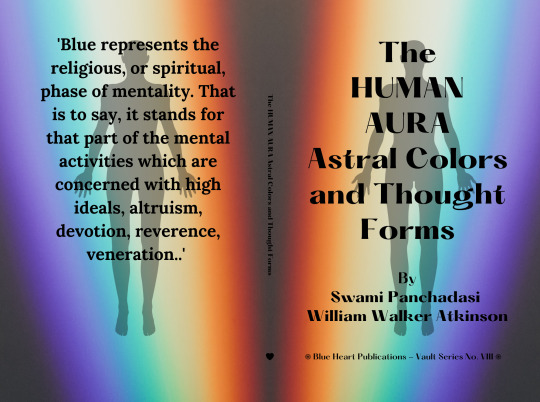
Swami Panchadasi, the pseudonym for the prolific William Walker Atkinson, beckons readers into the ethereal realm of metaphysics and mysticism with his profound work, "The Human Aura: Astral Colors and Thought Forms." This timeless exploration of the invisible energies that surround and emanate from the human body offers a captivating journey into the esoteric dimensions of our existence. The title alone hints at the unveiling of the unseen, promising a rich tapestry of insights into the intricacies of the human aura.
Atkinson's expertise in the realms of mysticism and the occult is evident as he guides readers through the subtle yet profound aspects of the human aura. The aura, believed to be an electromagnetic field that encapsulates the physical body, is described in vivid detail by Panchadasi. The astral colors and thought forms, according to his teachings, provide a visual representation of an individual's emotional, mental, and spiritual state.
The language employed by Panchadasi is both accessible and poetic, allowing readers to grasp the complexities of metaphysical concepts without feeling overwhelmed. The intricacies of astral colors, thought vibrations, and the interplay between the physical and spiritual realms are presented in a manner that invites contemplation and introspection.
One of the notable strengths of "The Human Aura" is its practical approach. Panchadasi not only describes the theory behind the human aura but also provides exercises and techniques for readers to develop their own sensitivity to these subtle energies. The inclusion of practical applications enhances the book's value, allowing readers to engage with the material on a personal level.
The title characterizes the human aura as a dynamic canvas that reflects the inner workings of the mind and spirit. Panchadasi introduces readers to the idea that thoughts and emotions are not mere intangible concepts but possess a tangible existence in the form of vibrant colors within the aura. This perspective encourages individuals to become more attuned to their inner states and, subsequently, take charge of their spiritual and mental well-being.
However, it is essential to approach Panchadasi's work with an open mind, recognizing that the exploration of the aura and thought forms is rooted in esoteric traditions. The book delves into areas that might challenge conventional beliefs, urging readers to broaden their perspectives on the nature of reality and the interconnectedness of the physical and metaphysical realms.
In conclusion, "The Human Aura: Astral Colors and Thought Forms" by Swami Panchadasi, alias William Walker Atkinson, is a captivating odyssey into the unseen dimensions of human existence. The title, with its promise of exploring astral colors and thought forms, encapsulates the essence of the work. Panchadasi's eloquent prose, coupled with practical exercises, invites readers to embark on a personal journey of self-discovery and heightened awareness. As one delves into the pages of this mystical masterpiece, the invisible threads of the human aura are unraveled, revealing a world that transcends the limits of the physical and invites us to contemplate the boundless potential of the human spirit.
"The Human Aura: Astral Colors and Thought Forms." , is available in Amazon in paperback 12.99$ and hardcover 18.99$ editions.
Number of pages: 91
Language: English
Rating: 8/10
Link of the book!
Review By: King's Cat
#Swami Panchadasi#William Walker Atkinson#The Human Aura#Astral Colors#Thought Forms#Metaphysics#Mysticism#Esoteric traditions#Invisible energies#Spiritual exploration#Vibrant colors#Inner states#Astral dimensions#Electromagnetic field#Spiritual well-being#Practical exercises#Introspection#Personal development#Esoteric insights#Metaphysical concepts#Inner workings of the mind#Subtle energies#Dynamic canvas#Spiritual journey#Mind and spirit#Open-minded exploration#Interconnectedness#Unseen dimensions#Transcendental experiences#Spiritual awakening
3 notes
·
View notes
Text
Radiation from a solar storm is hitting the Earth today (11/16/23), and that extra electromagnetic activity coming into our atmosphere means people will be more prone to headaches, migraines, cold, flu, cardiovascular issues, anxiety, depression, irritation, and anger. Take care out there and be extra forgiving with people today.
5 notes
·
View notes
Text
Airspeeders Over the Jedi Temple
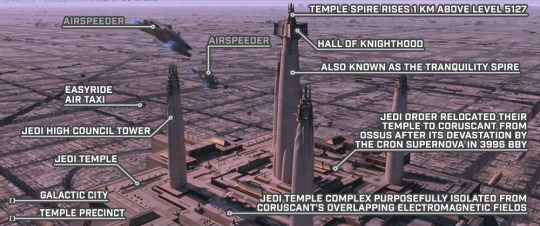
STAR WARS EPISODE I: The Phantom Menace 01:24:18
#Star Wars#Episode I#The Phantom Menace#Coruscant#Galactic City#Temple Precinct#Jedi Temple#unidentified airspeeder#EasyRide air taxi#Jedi High Council Tower#Temple Spire#Level 5127#Hall of Knighthood#Tranquility Spire#Ossus#Cron Supernova#3996 BBY#electromagnetic field
2 notes
·
View notes
Text
Outside of those found with the radius of a nuclear blast, souls stay the same throughout all time. They are nothing more than wireless data packets of information contained within an electromagnetic field.
1 note
·
View note
Text

I am revisiting these two books I discovered in the early aughts, this is when I really became fascinated with the electromagnetic spectrum as part of my earth literacy studies.
2 notes
·
View notes
Text
Il Distaccamento dal Corpo Fisico
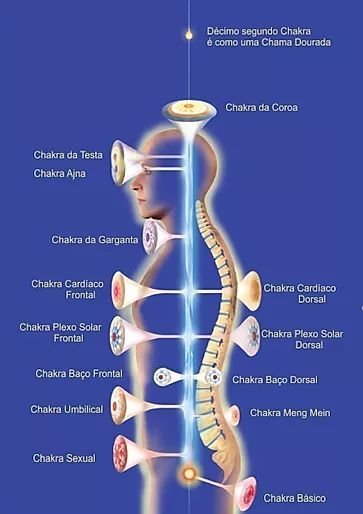
Il Distaccamento dal Corpo Fisico
Ultimamente esprimendo con chiarezza tutti i miei desideri più profondi, quelli reali, quelli connessi alla mia Anima, ho capito cosa significhi la disconnessione dal corpo fisico. Ci si ammala e si cade in un profondo stato di distaccamento per mancanza di accettazione, per paure e traumi trascinati con noi nel tempo, ma non ci si accorge del reale sintomo che null'altro è che la richiesta di attenzioni per quell'organo o quell'arto, quella parte di noi che vuole comunicare quale sia il reale motivo di quanto ci stia accadendo. Allora come comportarsi affinché tutto possa trovare il giusto equilibrio, la giusta sintonia? Occorre con grande consapevolezza connettersi all'energia del sole che troppo spesso viene svalutata, data per scontato, analizzata e visualizzata come "semplice luce solare". Tutto ciò però è un meccanismo troppo superficiale in quanto, attraverso l'energia del sole e una sana respirazione associata (il rebirth), possiamo connetterci più profondamente ad ogni parte di noi, ad ogni organo, ad ogni malessere, a tutto ciò che il nostro attuale corpo fisico cerca di comunicare direttamente con la nostra Anima. Tutto questo però deve accadere in piena coscienza di ciò che davvero desideriamo comprendere di noi stessi e di ciò che stiamo vivendo. Poi subentra l'inconscio, quella parte di noi che non desidera il cambiamento, che vuole mantenerci passivi e inattivi nella nostra zona confort, in quelle aree di ristrettezze mentali, di abitudini nocive e malsane, che non ci portano altre che basse vibrazioni, sconforto, degenerazioni, e malattie ulteriori. Imparando a muovere dentro di noi l'energia solare con la respirazione consapevole portiamo guarigione ad ogni organo, ad ogni livello dentro e fuori di noi. Capiremo in quel momento come avviene la fusione tra materia e spiritualità, tra Corpo e Anima, tra Consapevolezza e Realizzazione. La mancanza di connessione con il corpo fisico è estenuante, si viene costantemente pervasi da sensazioni di morte, mancanza di accettazione, insoddisfazione, mancanza di appetito, mancanza di creatività, "MANCANZA" e tutto ciò che ci fa sentire fuori luogo, senza una missione nella vita, senza stimoli e con bassissime energie che faticano ad alimentare i nostri più profondi desideri. Dobbiamo imparare a reagire senza lasciarci intrappolare da ciò che sono i desideri del subconscio.
Ho fatto tante ricerche, ho praticato tanti esperimenti spirituali su me stessa, finché non mi sono imbattuta in ciò che era più in linea con me, con la mia Anima. Ognuno dentro se stesso ha propri modi, proprie pratiche, sono scritte nel nostro DNA ma manca la voglia di ascoltare, di praticare, di sviluppare, di rivolgersi quelle attenzioni necessarie per portare guarigione profonda dentro se stessi. Ho portato alla luce diverse problematiche ascoltando i miei organi, dirigendo la luce solare verso tutte quelle parti di me che necessitavano di ascolto profondo : sono cambiate così tanto le mie abitudini, soprattutto alimentari, ma anche fisiche, emotive e vibrazionali............. Non vorrei mai ritornare com'ero prima del 1999. Una data specifica, la data in cui è deceduto il padre di mia figlia ed è il momento in cui tutto è cambiato, il momento in cui la mia vita ha iniziato a trasformarsi in pura spiritualità, un momento in cui la mia coscienza ha iniziato ad espandersi sempre più, un momento in cui ho iniziato a comprendere che siamo molto di più di un "semplice corpo fisico". Ognuno ha i suoi tempi, ognuno ha il suo percorso, ognuno ha il proprio MOMENTO di crescita personale, quel momento in cui si attiva maggior consapevolezza e desiderio di connettersi con Anima, Corpo, Mente e Cuore. Si perché il cuore ha un proprio campo energetico (campo elettromagnetico), ed è come se decidesse singolarmente cosa desidera dalla funzionalità del corpo fisico, tutto in perfetta risonanza.
Chiedo scusa se alcuni argomenti appariranno "fuori luogo o disconnessi tra di loro", ma la spiritualità, la capacità di canalizzare le informazioni è così che avviene : nulla è sbagliato, tutto è perfetto così com'è!
Colgo l'occasione per riportare una procedura che pratico tutte le mattine dopo aver svolto gli esercizi per l'apertura dei chakra : mi siedo con i piedi ben appoggiati a terra, le mani appoggiate sulle ginocchia con i palmi rivolti verso l'altro, gli occhi chiusi e sono solitamente orientata con il viso verso il sole. Comincio a respirare dal naso visualizzando il chakra del cuore e lascio uscire l'aria dalla bocca, visualizzando il secondo chakra e il chakra Meng Mein. Respiro profondamente, lentamente ma senza intervalli. Lascio entrare energia solare dal chakra del cuore e lascio uscire energia solare dal centro dei due chakra (di cui menzionato sopra). Vado avanti con questa respirazione consapevole finché non sarà il mio corpo a dire "OK, RALLENTA". In quel momento tutto si calma e il respiro torna alla normalità. Solitamente nei palmi delle mani appoggio due cristalli di rocca biterminati, affinché possano aiutarmi ad integrare in questo atto di pura guarigione l'energia e le caratteristiche del cristallo stesso, (perciò la scelta del cristallo è individuale, secondo il proprio sentire). Durante questa procedura la vostra attenzione dev'essere direttamente collegata a ciò che state svolgendo: respirazione e concentrazione sui chakra. Lavorare attivamente e costantemente su noi stessi con l'aiuto dell'energia solare ci aiuterà per tanto ad alimentare energie di rinnovamento dentro di noi, in ogni organo, in ogni più piccola parte del nostro essere, aumentando anche l'espansione del campo energetico del cuore. Impareremo a riconoscere maggiormente i nostri stati d'animo, le nostre sensazioni, le nostre emozioni, i sentimenti che vengono ripuliti da condizionamenti esterni. Impareremo la differenza tra connessioni o disconnessione dal corpo fisico. Aumentando l'energia di Guarigione intrinseca dentro ognuno di noi si andrà ad attingere ad una migliore qualità di vita in ogni ambito. Per ora vi lascio integrare a piccole dosi questo argomento, a cui alleghero' immagini e video : https://youtu.be/-aQikKmh7OU Vi auguro una buona lettura! Il mio desiderio di condivisione è tanta, sto cercando però di capire quale sia il metodo migliore per me e come sviluppare al meglio questo desiderio, che sia comprensibile a tutti coloro che leggono i miei "piccoli articoli".
The content present on the blog Natalía Mariani
It is forbidden copying or reproducing the content of this blog in any shape or form.
It is forbidden to publish or redistribute the content without the permission of the author.
Copyright © 2022, All rights reserved.
#spiritual development#chakras#subtlebodies#healing#subconsciosnessmind#meditation#soul connection#heart and soul#mindbodyspirit#solar power#electromagnetic field#self healing#physicalbody#internalworlds#openingchakras#quantumhealing#personal expenses#readingsoul
4 notes
·
View notes
Text
A new ion trap for larger quantum computers - Technology Org
New Post has been published on https://thedigitalinsider.com/a-new-ion-trap-for-larger-quantum-computers-technology-org/
A new ion trap for larger quantum computers - Technology Org
Researchers at ETH have managed to trap ions using static electric and magnetic fields and to perform quantum operations on them. In the future such traps could be used to realize quantum computers with far more quantum bits than have been possible up to now.
The experimental setup of the ETH researchers. The trap chip is located inside the container underneath the silver cupola, in which a lens captures the light emitted by the trapped ions. Image credit: ETH Zurich / Pavel Hrmo
The energy states of electrons in an atom follow the laws of quantum mechanics: they are not continuously distributed but restricted to certain well-defined values – this is also called quantisation. Such quantised states are the basis for quantum bits (qubits), with which scientists want to build extremely powerful quantum computers. To that end, the atoms have to be cooled down and trapped in one place.
Strong trapping can be achieved by ionising the atoms, which means giving them an electric charge. However, a fundamental law of electromagnetism states that electric fields that are constant in time cannot trap a single charged particle. By adding an oscillating electromagnetic field, on the other hand, one obtains a stable ion trap, also known as a Paul trap.
In this way, it has been possible in recent years to build quantum computers with ion traps containing around 30 qubits. Much larger quantum computers, however, cannot straightforwardly be realised with this technique. The oscillating fields make it difficult to combine several such traps on a single chip, and using them heats up the trap – a more significant problem as systems get larger. Meanwhile transport of ions is restricted to pass along linear sections connected by crosses.
Ion trap with a magnetic field
A team of researchers at ETH Zurich led by Jonathan Home has now demonstrated that ion traps suitable for use in quantum computers can also be built using static magnetic fields instead of oscillating fields. In those static traps with an additional magnetic field, called Penning traps, both arbitrary transport and the necessary operations for the future super-computers were realized. The researchers recently published their results in the scientific journal Nature.
Schematic showing the middle section of the used Penning trap. An ion (red) is trapped through a combination of an electric field produced by different electrodes (yellow) and a magnetic field. Image credit: ETH Zürich / Institute for Quantum Electronics
“Traditionally, Penning traps are used when one wants to trap very many ions for precision experiments, but without having to control them individually”, says PhD student Shreyans Jain: “By contrast, in the smaller quantum computers based on ions, Paul traps are used.”
The idea of the ETH researchers to build future quantum computers also using Penning traps was initially met with scepticism by their colleagues. For various reasons: Penning traps require extremely strong magnets, which are very expensive and rather bulky. Also, all previous realizations of Penning traps had been very symmetric, something that the chip-scale structures used at ETH violate. Putting the experiment inside a large magnet makes it difficult to guide the laser beams necessary for controlling the qubits into the trap, while strong magnetic fields increase the spacing between the energy states of the qubits. This, in turn, makes the control laser systems much more complex: instead of a simple diode laser, several phase-locked lasers are needed.
Transport in arbitrary directions
Home and his collaborators were not deterred by those difficulties, however, and constructed a Penning trap based on a superconducting magnet and a microfabricated chip with several electrodes, which was produced at the Physikalisch-Technische Bundesanstalt in Braunschweig. The magnet used delivers a field of 3 Tesla, almost 100’000 times stronger than Earth’s magnetic field. Using a system of cryogenically cooled mirrors, the Zurich researchers managed to channel the necessary laser light through the magnet to the ions.
Moving a single trapped ion in a two-dimensional plane and illuminating it with a laser beam allows the researchers to create the ETH logo. The image is formed averaging over many repetitions of the transport sequence. Image credit: ETH Zurich / Institute for Quantum Electronics
The efforts paid off: a single trapped ion, which can stay in the trap for several days, could now be moved arbitrarily on the chip, connecting points “as the crow flies” by controlling the different electrodes – this is something not previously possible with the old approach based on oscillating fields. Since no oscillating fields are needed for trapping, many of those traps can be packed onto a single chip. “Once they are charged up, we can even completely isolate the electrodes from the outside world and thus investigate how strongly the ions are disturbed by external influences”, says Tobias Sägesser, who was involved in the experiment as a PhD student.
Coherent control of the qubit
The researchers also demonstrated that the qubit energy states of the trapped ion could also be controlled while maintaining quantum mechanical superpositions. Coherent control worked both with the electronic (internal) states of the ion and the (external) quantised oscillation states as well as for coupling the internal and external quantum states. This latter is a prerequisite for creating entangled states, which are important for quantum computers.
As a next step, Home wants to trap two ions in neighbouring Penning traps on the same chip and thus demonstrate that quantum operations with several qubits can also be performed. This would be the definitive proof that quantum computers can be realized using ions in Penning traps. The professor also has other applications in mind. For instance, since the ions in the new trap can be moved flexibly, they can be used to probe electric, magnetic or microwave fields near surfaces. This opens up the possibility to use these systems as atomic sensors of surface properties.
Source: ETH Zurich
You can offer your link to a page which is relevant to the topic of this post.
#000#applications#approach#atom#atomic#atoms#channel#computers#container#diode#earth#electric field#electrodes#electromagnetic#electromagnetic field#electromagnetism#electronic#Electronics#electrons#energy#ETH Zurich#experimental#Fundamental#Fundamental physics news#Future#Giving#hand#how#it#laser
0 notes
Text
Coronal holes

Coronal holes appear as dark areas in the solar corona in extreme ultraviolet (EUV) and soft x-ray solar images. They appear dark because they are cooler, less dense regions than the surrounding plasma and are regions of open, unipolar magnetic fields. This open, magnetic field line structure allows the solar wind to escape more readily into space, resulting in streams of relatively fast solar wind and is often referred to as a high speed stream in the context of analysis of structures in interplanetary space.
Coronal holes can develop at any time and location on the Sun, but are more common and persistent during the years around solar minimum. The more persistent coronal holes can sometimes last through several solar rotations (27-day periods). Coronal holes are most prevalent and stable at the solar north and south poles; but these polar holes can grow and expand to lower solar latitudes. It is also possible for coronal holes to develop in isolation from the polar holes; or for an extension of a polar hole to split off and become an isolated structure. Persistent coronal holes are long-lasting sources for high speed solar wind streams. As the high speed stream interacts with the relatively slower ambient solar wind, a compression region forms, known as a co-rotating interaction region (CIR). From the perspective of a fixed observer in interplanetary space, the CIR will be seen to lead the coronal hole high speed stream (CH HSS).
The CIR can result in particle density enhancement and interplanetary magnetic field (IMF) strength increases preceding onset of the CH HSS. As the CH HSS begins to arrive at Earth, solar wind speed and temperature increase, while particle density begins to decrease. After passage of the CIR and upon transition into the CH HSS flow, the overall IMF strength will normally begin to slowly weaken.
Generally, coronal holes located at or near the solar equator are most likely to result in any CIR passage and/or higher solar wind speeds at Earth. Strong CIRs and the faster CH HSS can impact Earth’s magnetosphere enough to cause periods of geomagnetic storming to the G1-G2 (Minor to Moderate) levels; although rarer cases of stronger storming may also occur. Geomagnetic storms are classified using a five-level NOAA Space Weather Scale. The larger and more expansive coronal holes can often be a source for high solar wind speeds that buffet Earth for many days.
1 note
·
View note
Text
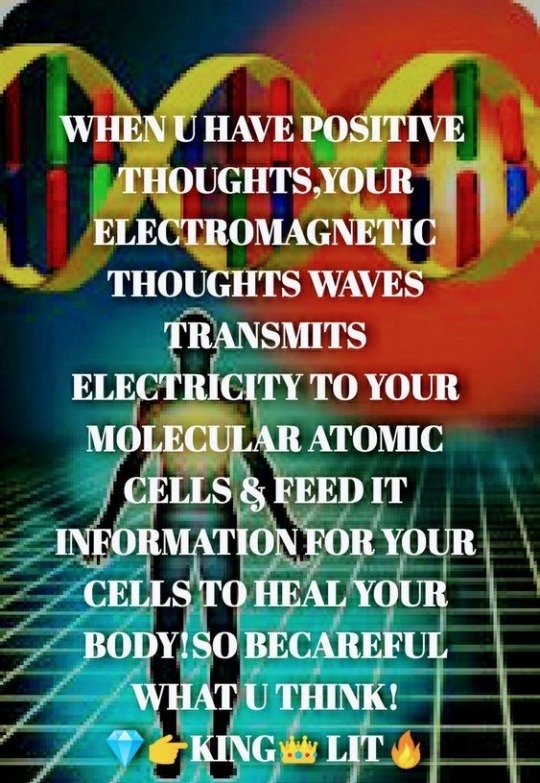
0 notes
Text
"Beyond the Veil: Illuminating 'The Human Aura' by Swami Panchadasi (William Walker Atkinson)"

Swami Panchadasi, the pseudonym for the prolific William Walker Atkinson, beckons readers into the ethereal realm of metaphysics and mysticism with his profound work, "The Human Aura: Astral Colors and Thought Forms." This timeless exploration of the invisible energies that surround and emanate from the human body offers a captivating journey into the esoteric dimensions of our existence. The title alone hints at the unveiling of the unseen, promising a rich tapestry of insights into the intricacies of the human aura.
Atkinson's expertise in the realms of mysticism and the occult is evident as he guides readers through the subtle yet profound aspects of the human aura. The aura, believed to be an electromagnetic field that encapsulates the physical body, is described in vivid detail by Panchadasi. The astral colors and thought forms, according to his teachings, provide a visual representation of an individual's emotional, mental, and spiritual state.
The language employed by Panchadasi is both accessible and poetic, allowing readers to grasp the complexities of metaphysical concepts without feeling overwhelmed. The intricacies of astral colors, thought vibrations, and the interplay between the physical and spiritual realms are presented in a manner that invites contemplation and introspection.
One of the notable strengths of "The Human Aura" is its practical approach. Panchadasi not only describes the theory behind the human aura but also provides exercises and techniques for readers to develop their own sensitivity to these subtle energies. The inclusion of practical applications enhances the book's value, allowing readers to engage with the material on a personal level.
The title characterizes the human aura as a dynamic canvas that reflects the inner workings of the mind and spirit. Panchadasi introduces readers to the idea that thoughts and emotions are not mere intangible concepts but possess a tangible existence in the form of vibrant colors within the aura. This perspective encourages individuals to become more attuned to their inner states and, subsequently, take charge of their spiritual and mental well-being.
However, it is essential to approach Panchadasi's work with an open mind, recognizing that the exploration of the aura and thought forms is rooted in esoteric traditions. The book delves into areas that might challenge conventional beliefs, urging readers to broaden their perspectives on the nature of reality and the interconnectedness of the physical and metaphysical realms.
In conclusion, "The Human Aura: Astral Colors and Thought Forms" by Swami Panchadasi, alias William Walker Atkinson, is a captivating odyssey into the unseen dimensions of human existence. The title, with its promise of exploring astral colors and thought forms, encapsulates the essence of the work. Panchadasi's eloquent prose, coupled with practical exercises, invites readers to embark on a personal journey of self-discovery and heightened awareness. As one delves into the pages of this mystical masterpiece, the invisible threads of the human aura are unraveled, revealing a world that transcends the limits of the physical and invites us to contemplate the boundless potential of the human spirit.
"The Human Aura: Astral Colors and Thought Forms." , is available in Amazon in paperback 12.99$ and hardcover 18.99$ editions.
Number of pages: 91
Language: English
Rating: 8/10
Link of the book!
Review By: King's Cat
#Swami Panchadasi#William Walker Atkinson#The Human Aura#Astral Colors#Thought Forms#Metaphysics#Mysticism#Esoteric traditions#Invisible energies#Spiritual exploration#Vibrant colors#Inner states#Astral dimensions#Electromagnetic field#Spiritual well-being#Practical exercises#Introspection#Personal development#Esoteric insights#Metaphysical concepts#Inner workings of the mind#Subtle energies#Dynamic canvas#Spiritual journey#Mind and spirit#Open-minded exploration#Interconnectedness#Unseen dimensions#Transcendental experiences#Spiritual awakening
0 notes
Text
Ham Radio: A Personal Account
by Kevin Gillette
Amateur radio, or ham radio as it is more commonly known, has been a hobby for millions of people around the world for approximately 100 years, give or take. It exists today for much the same reason it came about in the first place: it is (and was) a way for both amateur and professional engineers, tinkerers, physicists and inventors to interact with one another, comparing notes, ideas and innovations that have played a major role in the expansion of telecommunications up to the present day.
This brief memoir is not a history of the hobby, for I came into it only 50 years ago, in 1974. As a result, I don’t have first-hand knowledge of most of what came before. But I can sketch the essentials for you, and with any luck, I will persuade you to see how this hobby can bring a great deal of joy and satisfaction. At the end of this account I will provide some tangible evidence of my days at the helm of a transmitter/receiver/antenna combination over the course of several decades.
First, some preliminaries:
Ham radio began about 100 years ago. The very first enthusiasts used very primitive equipment for both transmission and reception. The earliest transmitters used a technique called spark gap in which the radio signal arose from a spark generated between two electrodes. The frequency of this transmission was dictated by the physics of the electrodes and the gap between them.
For frequency, think of your standard AM and FM broadcast bands, or local television. Radio emission occurs when an electrical field rapidly reverses direction – that is, electrons flow back and forth through a wire or some other device capable of supporting an electromagnetic field. The speed with which this flow of electrons reverses course determines the frequency; the faster the course reversal, the higher the frequency. A single round trip of the electrons is usually referred to as a cycle. Thus, frequency is expressed in cycles per second, or in an equivalent unit, Hertz (one Hertz = one cycle per second). All electromagnetic radiation can be expressed this way. Radiation typically occurs when the flow of electrons alternates direction - electron flow goes by the term current, and so radiation happens with alternating current, or AC. In many (though not all) countries, the electricity that comes out of a wall plug is AC. The opposite of AC is DC - direct current - and this is the case when the electrons always flow the same direction. In essence, DC is zero Hertz AC.
The range of hearing of most humans is between about 60 Hertz (Hz) and roughly 10,000 Hz (this is also indicated as 10 kiloHertz, or 10 KHz). In the United States, the AM broadcast band is from 540 KHz to 1600 KHz (this latter measurement is also expressed as 1.6 megaHertz, or 1.6 MHz). Standard television signals have traditionally begun at 54 MHz, which each television channel occupying a total of 6 MHz. So this means that Channel 2 (for obscure reasons, there is no Channel 1) is from 54 – 60 MHz, channel 3 from 60 – 66 MHz, and so on. There is a break in this pattern for the U.S. FM broadcast band, which lives from 88.0 – 108.0 MHz; the TV channels then continue up to channel 13. The channels 2 through 13 are called the VHF - Very High Frequency - channels. After channel 13 there is another significant frequency gap, after which the UHF, or Ultra High Frequency channels begin, with channel 14.
I’ve mentioned a couple of undefined terms: AM and FM. AM stands for Amplitude Modulation. This was the earliest method used for transmitting sound signals (voice, music, etc). It works by using a central frequency known as the carrier and superimposing an audio frequency on it, resulting in the actual size of the emission varying (at the carrier frequency) according to the audio frequency. This methodology gives rise to what are called sidebands, which cover the frequencies between the carrier frequency plus and minus the audio frequency. This is still used today on the AM broadcast bands in most countries. It is rather wasteful in terms of power, since a lot of the transmitted signal power is in the carrier itself rather than the sidebands where all the good stuff is. For this reason, ham radio operators who do voice transmissions have, since about the 1940s or so, used something called SSB, or single sideband transmission. In this mode, one chooses one of the two sidebands (lower or upper) and suppresses the other one as well as the carrier, meaning that most of the transmitted power goes into the information in the signal rather than being wasted. A more recent form of transmission is FM - Frequency Modulation. In FM transmission, instead of varying the amplitude of the carrier wave as a function of the audio content, the frequency wiggles according to the superimposed audio content. In AM transmission, static and other interference phenomena tend to occur at the peaks of the modulation waveform (see the figure below); with FM, the peaks of the waveform don’t contain information so they can be filtered out, and this gives rise to the notion - largely true - that FM is static-free. Here is an example AM waveform as seen on an oscilloscope:

For comparison, here is an example of an FM waveform as seen on an oscilloscope:

In this latter picture, notice how the amplitude of the waveform doesn’t change, but the spacing between the cycles does – this is the wiggle in the frequency I referred to earlier.
I mentioned voice operations in ham radio using a technique called SSB. There are other techniques, especially at the higher frequencies, but I’m not going into those here. I admit that I am something of a purist; I have always preferred to use Morse Code in my ham radio exploits. This is known as CW - Continuous Wave - in the ham radio community. The idea is that to transmit Morse Code, one merely turns a carrier – a continuous wave – on and off with a Morse Code key or something equivalent to it. Speed of transmission is usually expressed in words per minute - wpm. Although the requirement is gone today, in the past, obtaining a ham radio license required the operator to demonstrate at least a basic proficiency in Morse Code, usually somewhere between 5 and 20 wpm. A word in this context is a group of 5 characters and the space after them. I’m proud to say that at my peak, I could listen to – “copy” – transmissions running at about 45 wpm. The world record in those days was somewhere in the neighborhood of 75 wpm, and high-speed code operators in the US Navy and elsewhere typically operated at around 50 wpm, so I was competitive in the CW community as far as speed.
I’ve talked a lot about transmission, but of course it’s all for naught if there’s no way to hear the signal. To do this, one needs a receiver. Receivers are generally much more complicated devices than transmitters – even a modern transmitter can often be constructed with perhaps a dozen discrete parts, including the power supply (or batteries), whereas modern receivers typically need about 10 times that amount in order to be effective and reliable. This is because transmitting is essentially an increasing entropy operation from a thermodynamic perspective, whereas receiving is a decreasing entropy operation, which fights against the tendency toward greater entropy according to the 3rd Law of Thermodynamics. This is much the same as it being a lot easier to generate heat than to remove it from an environment. Receivers are far too complicated to get into here, but I will note that for the kind of work I did – CW and Morse Code – the way the signal could be heard was to tune the receiver to a frequency just slightly to one side of the transmitting carrier frequency and use what’s called a BFO - Beat Frequency Oscillator - to provide a sidetone that represents the difference between the BFO frequency and the carrier frequency. This will be important a bit later, so remember that term.
And of course the ensemble isn’t complete without some kind of antenna. Like both transmitters and receivers, antennas can be everything from a simple piece of wire to a very elaborate contraption that covers a lot of real estate. The rule of thumb is that the higher the frequency, the smaller the antenna needs to be. A very common kind of antenna used on the lower ham radio bands is a vertical antenna, which as the name implies, is a piece of metal (usually aluminum) that is vertically installed. The cable that connects the antenna to the transmitter and receiver is usually attached at the bottom of such an antenna – a picture of such an arrangement appears below:

In this photograph, the antenna has some extra horizontal spokes coming off of it at various points – these are used to suppress capacitance effects of the central pole (the fact that it’s a hollow tube and not an infinitely thin wire causes some of these issues to arise) and to otherwise improve the performance of the antenna.
I haven’t said much about power, so I’ll do so now. Where commercial broadcast stations can transmit at quite high power – varying from 1000 watts to upwards of 100,000 watts – ham radio is restricted to a maximum of 1000 watts for CW and 2000 watts for SSB. I was typically a low-power operator, seldom going above 50 watts and often no more than 10 watts. And yet I was able to make contact with people all over the world on such modest power, so it doesn’t take a lot. An effective antenna system and favorable geography are the primary arbiters of how well one can communicate over long distances.
Something else I mentioned but haven’t yet elaborated on is the licensing process. In the United States, there used to be the following levels of licensing, from the most basic to the most advanced: Novice, Technician, General, Advanced, Extra. I began my ham radio career as a Novice, as everyone did in those days. My radio call sign was WN6FEB (see photo below). To obtain a Novice license, one had to know some basic electronic and radio theory, some basic regulatory stuff (power, bands, on-air protocols, etc) and have mastered Morse Code at 5 wpm. I obtained this license when I was 13 years old. A short time later I upgraded to a General class license and a slightly new call sign, WA6FEB, which extended the radio frequency bands I was permitted to operate on and also extended my maximum output power (as a Novice I was restricted to 100 watts, I think). The General class license required knowledge of more advanced electronics and radio physics, a bit more regulations and Morse Code proficiency of 13 wpm. A few years later I took the plunge and got my Extra class license, which expanded the knowledge base from the previous two licenses and required Morse speed of 20 wpm. As an Extra class ham, I had unlimited access to all internationally agreed-upon ham frequency bands and full power rating. My main motivation in getting the Extra class license was the radio bands – I was never a high-power operator.
My Novice license QSL card (more on this in a moment):
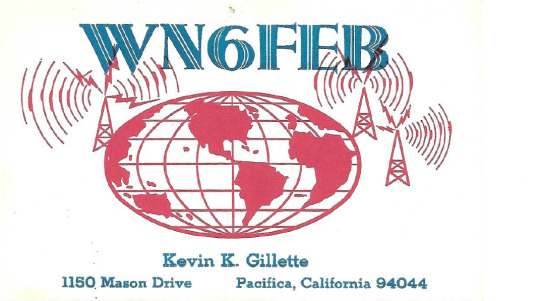
My Extra class license QSL card:
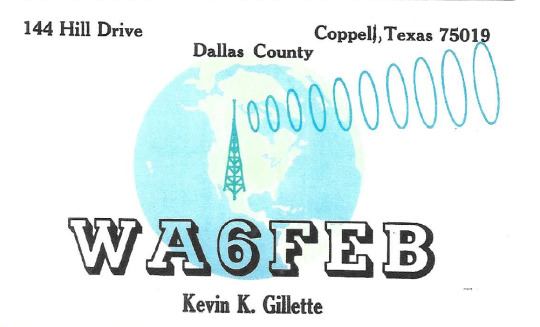
QSL cards are like postcards for hams – we often exchange them to acknowledge that we’ve made contact. They’re often attractive and make great wallpaper or collectibles. I’ve amassed quite a few over the years – there are examples of QSL cards received from around the world at the bottom of this article.
Dovetailing with a previous paragraph, a few words about ham radio frequency bands. Per international agreement, ham radio operators have a large number of radio spectrum segments allocated for their use. It should be noted that in many cases, these allocations are not exclusively for ham radio. One example is the 40-meter band, which covers 7.0 – 7.3 MHz. At least in the 1970s and 1980s, this band featured a lot of non-ham activity, including over-the-horizon radar from the USSR and Voice of America broadcasts from various parts of the world. What made this especially annoying is that the 40-meter band was almost universally open, meaning that effective communication could happen on that band at any time of the day or night, year-round. The Soviet radar sounded like a very loud metronome, and Voice of America was an AM transmission in a segment of the radio spectrum where people didn’t normally use AM, meaning that receivers tuned to this part of the spectrum ended up hearing the carrier as well as the audio signal (which made the audio portion hard to understand). Still, for a young ham radio aficionado hunting for exotic call signs in the ether, it was a lot of fun to wade among the incoherent mass of radio transmissions.
The bands are usually referred to by their approximate wavelength. Recalling that light travels at approximately 300,000,00 meters/second, here is a sample of some of the bands that were popular when I first started back in 1974 (there have been additional bands added to the spectrum since that time; I have no experience on those bands):
HF:
160 meters – 1.8 – 2.0 MHz (I didn’t have any contacts on this band, but my older receiver permitted me to listen in. The antenna requirements for this band are too large for the real estate I had.)
80 meters – 3.5 – 4.0 MHz
40 meters – 7.0 – 7.3 MHz
20 meters – 14.0 – 14.35 MHz
15 meters – 21.0 – 21.45 MHz
10 meters – 28.0 – 29.7 MHz
VHF:
6 meters – 50.0 – 54.0 MHz (note that this is just below the start of the standard television broadcast segment, Channel 2, as noted earlier)
2 meters – 144.0 – 148.0 MHz
I also mentioned the idea of a band being open. On the HF (High Frequency) bands, the propagation of a signal often proceeds in two ways: ground wave and sky wave. Ground wave is exactly as the name implies; the radio signal follows the ground. This signal is of comparatively short distance, perhaps 100 miles or thereabouts. Sky wave is quite a different phenomenon and involves the signal bouncing off of the ionosphere, a layer of our atmosphere that lives between 50 and 600 miles above the Earth’s surface. As the name suggests, this layer contains a lot of ionized particles - mostly from the Sun’s interaction - and it is this layer of ions that forms a sort of reflecting barrier for radio waves below a certain frequency. The highest frequency for which the ionosphere is a reflecting barrier is referred to as the MUF - Maximum Usable Frequency. Above this frequency, radio transmissions pass through the ionosphere and out into space. When a band is open, that means that the MUF is greater than the band’s frequency, at least as an approximation. The 40-meter band is virtually always below the MUF, meaning that it’s open all of the time. This is what makes it so popular. The 20-meter band is often (though not always) open, which is what makes it a premium band for long distance communications, referred to in ham radio parlance as DX (which stands for distance). The 20-meter band has the advantage that it is strictly for ham radio – no competing services cause interference and noise. When an HF band is open, the sky wave mode of signal propagation is also referred to as skip, meaning that the signal will skip off of the ionosphere, sometimes multiple times – this makes for worldwide transmission and reception.
You may be asking yourself what was in it for me, that I would have such fervor for a hobby that is admittedly declining in popularity (with the advent of email and the Internet). I think a simple anecdote will make it clear:
When I was about 15 years old, early in my ham radio career, I lived in a small town near San Francisco and also near Stanford University. I had an on-air friend named David Gray, WB6ZMJ, who was a graduate student in geophysics at Stanford. David was a member of the Stanford Amateur Radio Club (SARC):
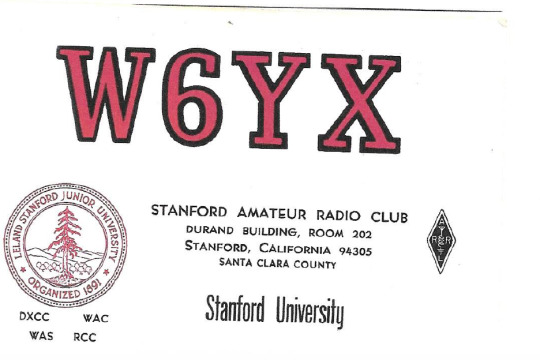
One weekend he invited me down to Stanford to participate in what is known as moonbounce. In moonbounce, hams from across the globe will transmit on the VHF frequencies directly up to the Moon, bouncing their signal off the Moon to be received somewhere else on the planet. Recall what I mentioned above about the MUF; the VHF frequencies are all well above the MUF, so VHF signals cannot participate in the skip mode of propagation (except under some very unusual circumstances). Stanford University has an enormous radio telescope, affectionately referred to as The Dish, that sits on a small hill on the SW side of campus. A picture of it appears below. The Dish is about 150 feet across and was built in 1961. It remains in use to this day. The SARC used The Dish as their antenna for moonbounce activity.
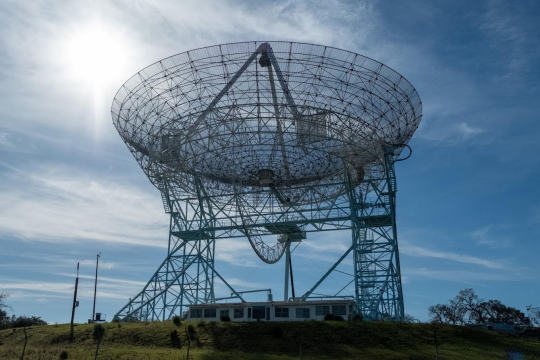
Here's the rub: The path length from Earth – Moon – Earth (EME) is about 500,000 miles. The loss in signal strength approaches 250 dB, which equates to dropping from a Formula 1 roar down to the tiniest of whispers. In fact, the signal strength is so low that even when using CW, the signal isn’t strong enough to trigger a BFO for a sidetone in order to read the signal. The only way to hear the signal is to listen for quiet spots in the background noise! That’s where I came in on this particular occasion. I have (and have always had) exceptionally acute high-frequency hearing, and so what sounded like white noise to the grad students in the SARC was an intelligible signal to me. So, in the middle of the night, there I was, in the metal housing seen at the base of The Dish, listening to a mysterious CW signal from a ham in Sweden coming by way of deep space, and writing down what I heard. For a lonely, nerdy kid, this was the height of affirmation – it was OK to be nerdy and science-oriented when you got to play with such exotic toys! Indeed, not only did this experience cement my desire to pursue ham radio; it also confirmed that Stanford was the place I wanted to pursue my university studies (as indeed I did, graduating with a Bachelor’s degree in applied mathematics and a Master’s degree in operations research, all before my 21st birthday).
In the years following graduation from Stanford, I got married and moved to Dallas, Texas, where once we purchased our first home, I immediately set up a nice ham shack in the laundry room. I made tons of great contacts all over the world with the most modest of equipment (alas, I don’t have any photos of my gear from those days). When we started our family, the hobby had to take a back seat, and eventually I let my license lapse. But now that I am approaching retirement age, I long once more to get back on the air and hunt for those mysterious signals beaming in from everywhere.
Kevin Gillette, 26 January 2024
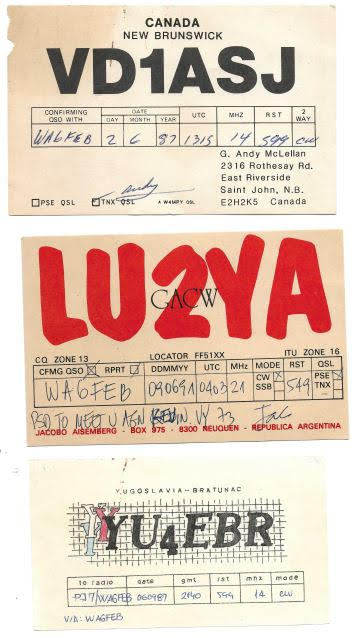
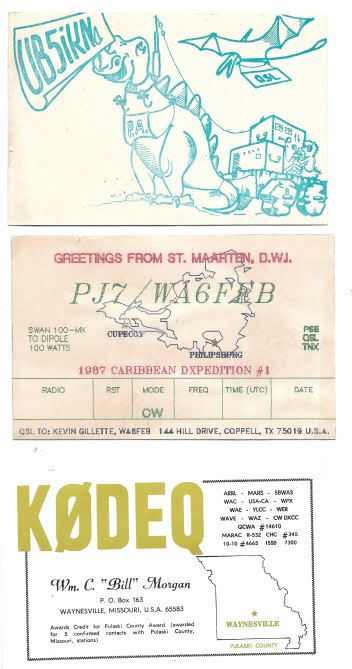



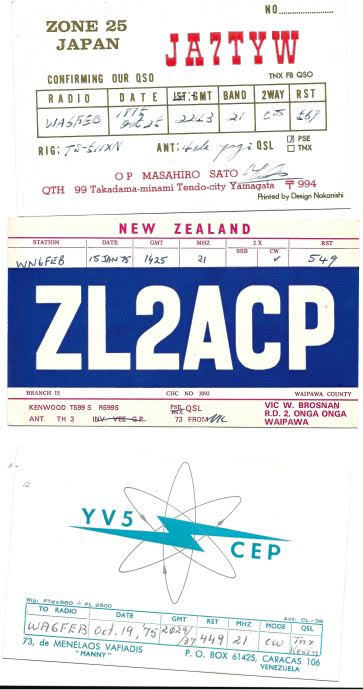

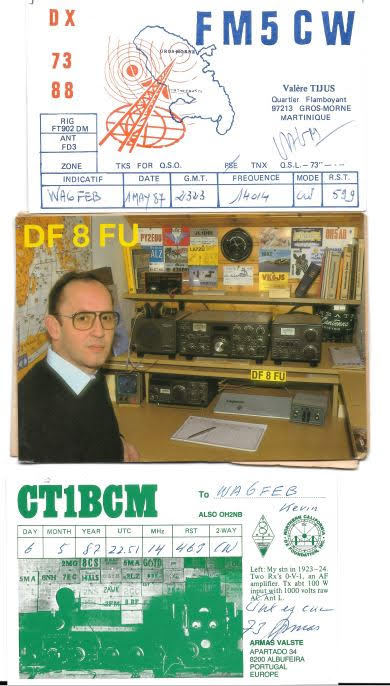

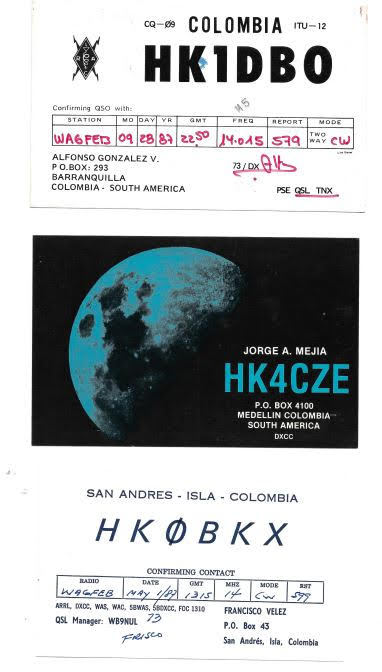
Image credits : Images in the text with thanks to © respective creators and publishers. QSL Cards at end of article above received by author, with thanks to © respective creators
Kevin Gillette
Words Across Time
26 January 2024
wordsacrosstime
#Words Across Time#Kevin Gillette#wordsacrosstime#January 2024#Amateur Radio#Ham Radio#Broadcast Bands#Electromagnetic Field#Stanford Amateur Radio Club#Beat Frequency Oscillator#US Navy#Morse Code#SSB#AM#FM#Maximum Usable Frequency#Sidetone#Sidebands#Continuous Wave#Antenna#Spark Gap#Hobby#Tinkerers#Inventors#Telecommunications#VHF#Frequency Modulation#Amplitude Modulation#Alternating Current#Direct Current
0 notes
Text
NAVIGATING THE MAZE OF ELECTROMAGNETIC FIELDS (EMFS) AND ELECTROSMOG: WHAT YOU NEED TO KNOW
Introduction
In our technologically advanced world, electromagnetic fields (EMFs) are ubiquitous. From cell phones to Wi-Fi networks and everything in between, we are constantly exposed to EMFs. While they have become a cornerstone of modern living, there is increasing concern about the potential health risks associated with them, often referred to as "electrosmog." This article aims to provide an overview of what EMFs and electrosmog are, why they are a concern, and what can be done to minimize risks.
What Are Electromagnetic Fields (EMFs)?
Electromagnetic fields are invisible areas of energy, commonly referred to as radiation, that are associated with the use of electrical power and various forms of natural and human-made lighting. They are categorized into two types:
Non-ionizing radiation: This type includes radio frequencies, microwaves, and visible light. Most of our daily technological devices like smartphones, Wi-Fi routers, and microwave ovens fall under this category.
Ionizing radiation: These are higher-frequency EMFs, including X-rays and gamma rays, which have enough energy to remove tightly bound electrons from atoms.
What is Electrosmog?
Electrosmog is a term used to describe the invisible yet omnipresent "smog" of electromagnetic radiation generated by various electrical and wireless devices. This includes a wide range of frequencies from radio waves to microwaves, most commonly emitted by devices like cell phones, Wi-Fi routers, and power lines.

Why is it a Concern?
While the scientific community is still divided on the subject, there is growing evidence that suggests prolonged exposure to EMFs, particularly of certain frequencies, may have adverse health effects. These may include:
Sleep disturbances: Exposure to EMFs can interfere with the body's circadian rhythm, potentially causing insomnia.
Mental Health: Some studies suggest that exposure to high levels of EMFs can contribute to depression, anxiety, and stress.
Physical Health: Prolonged exposure to EMFs has been linked with symptoms such as headaches, fatigue, and even more serious conditions like fertility issues and cancer, although more research is needed.
Mitigating Risks: A Holistic Approach
Lifestyle Changes
Reducing Device Usage: Limit the time spent on electronic devices and consider setting them to "airplane mode" when not in use.
Wi-Fi-Free Zones: Create areas in your home where Wi-Fi is turned off, allowing your body a break from constant exposure.
Protective Gear and Equipment
Companies like Beneficial Environments offer equipment and materials specifically designed to reduce exposure to electrosmog, ranging from shielding fabrics to specialized paint.
Professional Advice
Consulting with experts who specialize in EMF and electrosmog can offer valuable insights into reducing exposure through home surveys and other tailored solutions.
Conclusion
While the jury is still out on the long-term effects of EMF exposure, it's prudent to take a proactive approach to minimize risks. Awareness is the first step towards taking control of our own health in the age of electrosmog. As society becomes more conscious of these issues, we can hope for more comprehensive solutions that don't force us to choose between modern convenience and our well-being.
This post was originally from:
Radiance Resonance
1 note
·
View note
Text
Apex Predator

STAR WARS EPISODE I: The Phantom Menace 00:18:26
#Star Wars#Episode I#The Phantom Menace#Naboo#Naboo Abyss#tribubble bongo#planet core#underwaterway#Caves of Eleuabad#sando aqua monster#gills#forward diving plane#electromagnetic field#Jar Jar Binks#Otolla Gungan#Qui-Gon Jinn#Jedi#Obi-Wan Kenobi#portside cargo bubble#starboard cargo bubble#apex predator
1 note
·
View note